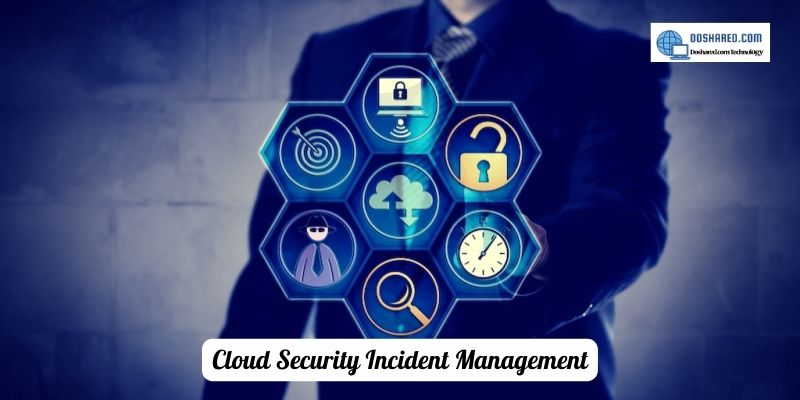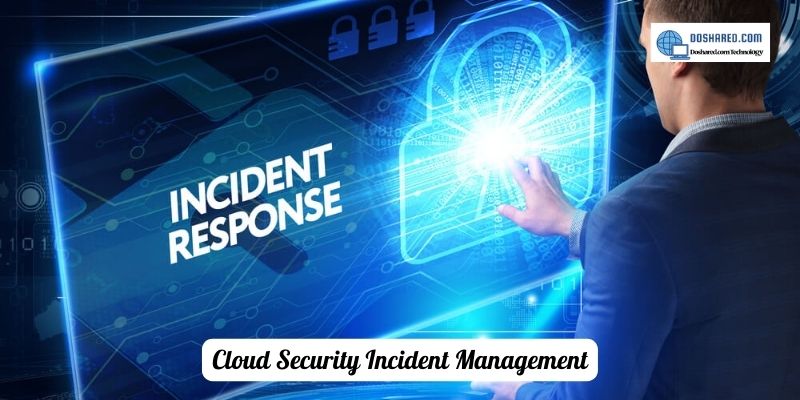Cloud Security Incident Management: 10 Common types
In today’s digital landscape, Cloud Security Incident Management plays a critical role in safeguarding organizations against evolving threats. By promptly detecting, responding to, and mitigating security incidents in the cloud, businesses can ensure the resilience of their infrastructure, protect sensitive data, and maintain operational continuity in this article by Doshared.com
Contents
What is Cloud Security Incident Management

Cloud Security Incident Management refers to the processes and activities undertaken by organizations to identify, respond to, and mitigate security incidents that occur within their cloud computing environment. It involves detecting and analyzing potential threats or breaches, coordinating a response, and implementing measures to minimize the impact of the incident.
Why is Cloud security incident management important for organizations utilizing cloud services
Cloud security incident management is crucial for organizations utilizing cloud services due to the following reasons:
- Protection of Data and Assets:

Cloud services often store sensitive data and valuable assets. Effective incident management ensures prompt detection, response, and mitigation of security incidents, minimizing the risk of data breaches, unauthorized access, or data loss.
- Business Continuity:
Cloud services are critical to many organizations’ operations. Efficient incident management helps in maintaining business continuity by swiftly addressing security incidents, minimizing downtime, and restoring services to normal operation.
- Compliance and Legal Requirements:

Many industries have regulatory compliance requirements regarding data protection and security. Proper incident management helps organizations adhere to these regulations, avoid penalties, and protect their reputation.
- Mitigation of Financial Loss:
Security incidents can lead to financial losses through various means, such as system downtime, data loss, reputational damage, or legal consequences. Effective incident management minimizes financial risks by mitigating the impact of incidents and reducing the associated costs.
- Preservation of Customer Trust:

Security incidents can erode customer trust and loyalty. By promptly and transparently addressing security incidents, organizations demonstrate their commitment to protecting customer data and maintaining a secure cloud environment, fostering trust with their customers.
- Proactive Risk Management:
Incident management is not just about reacting to security incidents but also involves proactive measures to prevent incidents. By implementing robust security controls, monitoring systems, and incident response plans, organizations can minimize the likelihood and impact of security incidents.
- Continuous Improvement:

Incident management allows organizations to learn from security incidents and continuously improve their security posture. Post-incident analysis helps identify vulnerabilities, gaps in security controls, and areas for improvement, leading to a more resilient and secure cloud environment.
What are some common types of security incidents that can occur in a cloud environment?
In a cloud environment, several common types of security incidents can occur. Some of these include:
- Unauthorized Access:
This involves unauthorized individuals gaining access to cloud resources, systems, or data. It can result from weak authentication mechanisms, compromised credentials, or misconfigured access controls.
- Data Breaches:

Data breaches occur when sensitive or confidential information is accessed, disclosed, or stolen without authorization. This can happen due to vulnerabilities in cloud infrastructure, inadequate encryption, or insider threats.
- Distributed Denial of Service (DDoS) Attacks:
DDoS attacks aim to overwhelm cloud services with a high volume of traffic, rendering them unavailable to legitimate users. Attackers use botnets or other means to flood the system, causing disruptions and service degradation.
- Malware Infections:
Malware can infiltrate cloud environments through infected files, email attachments, or compromised applications. Once inside, it can spread across systems, steal data, or disrupt operations.
- Account Hijacking:

Account hijacking involves unauthorized individuals gaining control over user accounts within the cloud environment. This can lead to unauthorized access, data manipulation, or misuse of resources.
- Insider Threats:
Insider threats refer to security incidents caused by individuals with authorized access to cloud resources. These incidents can include data theft, sabotage, or intentional misuse of privileges.
- Misconfiguration Errors:
Misconfigurations in cloud services, such as insecure storage settings, weak access controls, or improper network configurations, can result in security vulnerabilities that attackers can exploit.
- API Vulnerabilities:

Application Programming Interfaces (APIs) in cloud environments can have vulnerabilities that attackers can exploit to gain unauthorized access, manipulate data, or disrupt services.
- Data Loss or Data Corruption:
Data loss or corruption can occur due to hardware failures, software bugs, accidental deletions, or malicious actions. It can lead to significant disruptions, financial loss, or regulatory non-compliance.
- Compliance Violations:
Security incidents can also involve violations of industry or regulatory compliance requirements, such as GDPR, HIPAA, or PCI DSS, within the cloud environment.
These are just some examples of security incidents that organizations may encounter in a cloud environment. It is essential for organizations to implement robust security measures and incident response plans to mitigate these risks and protect their cloud infrastructure and data.
Conclusion
In summary, cloud security incident management is vital for organizations utilizing cloud services to protect their data, ensure business continuity, comply with regulations, mitigate financial risks, preserve customer trust, and continuously enhance their security practices. It enables organizations to effectively respond to security incidents and safeguard their cloud infrastructure, services, and sensitive information.
Conclusion: So above is the Cloud Security Incident Management: 10 Common types article. Hopefully with this article you can help you in life, always follow and read our good articles on the website: Doshared.com




